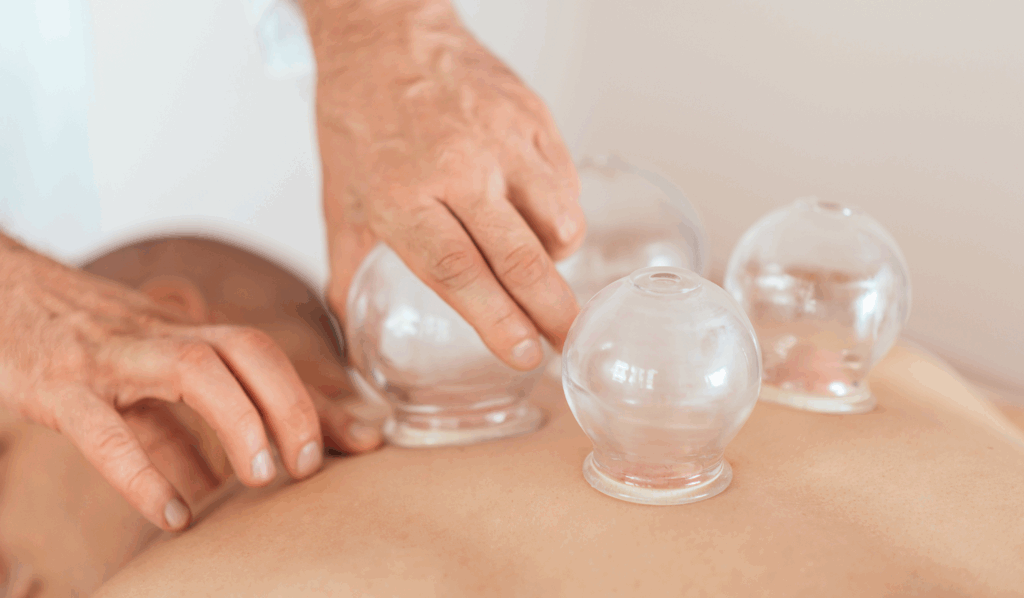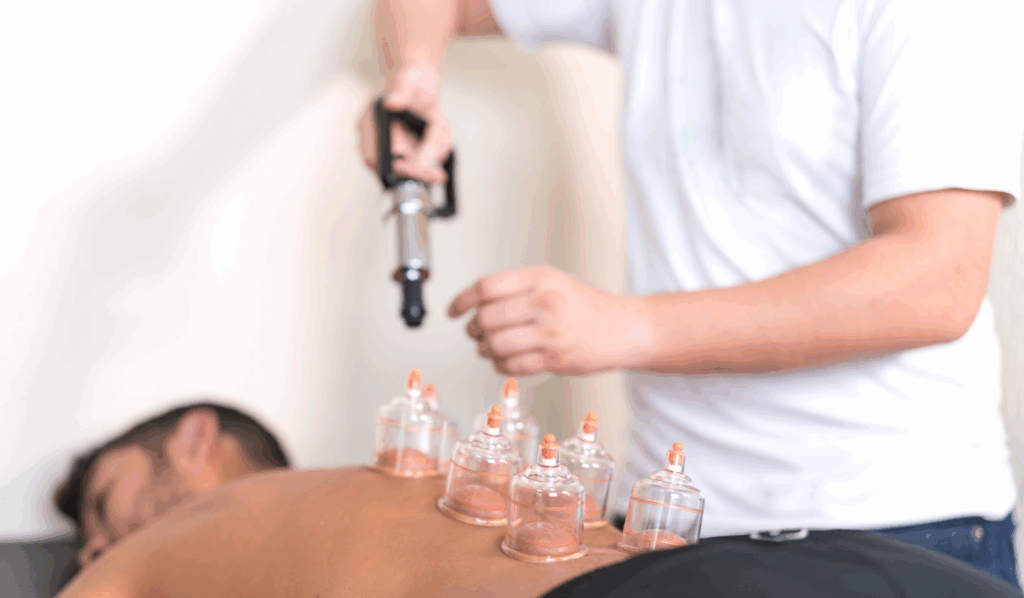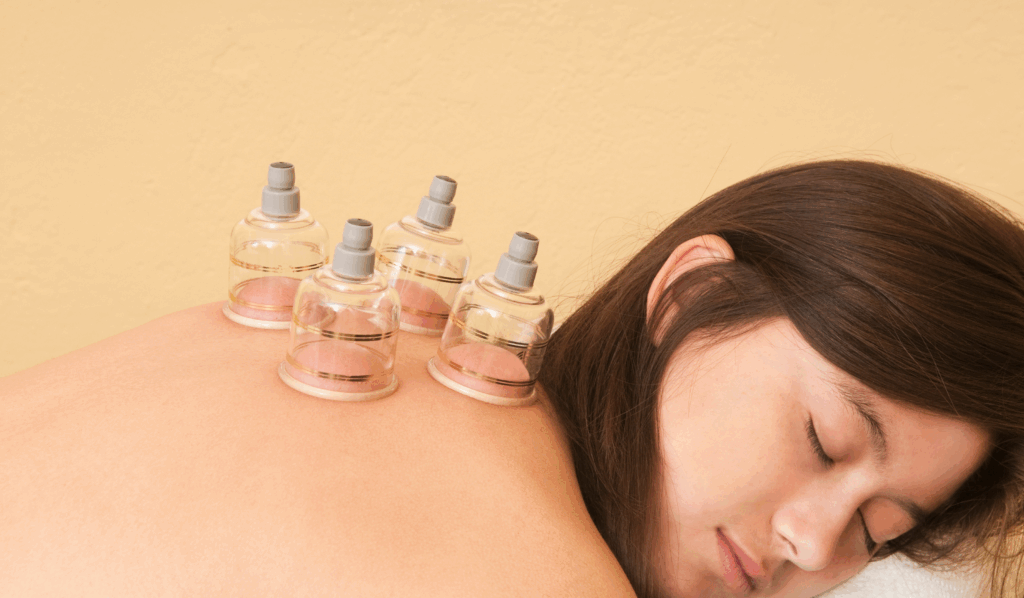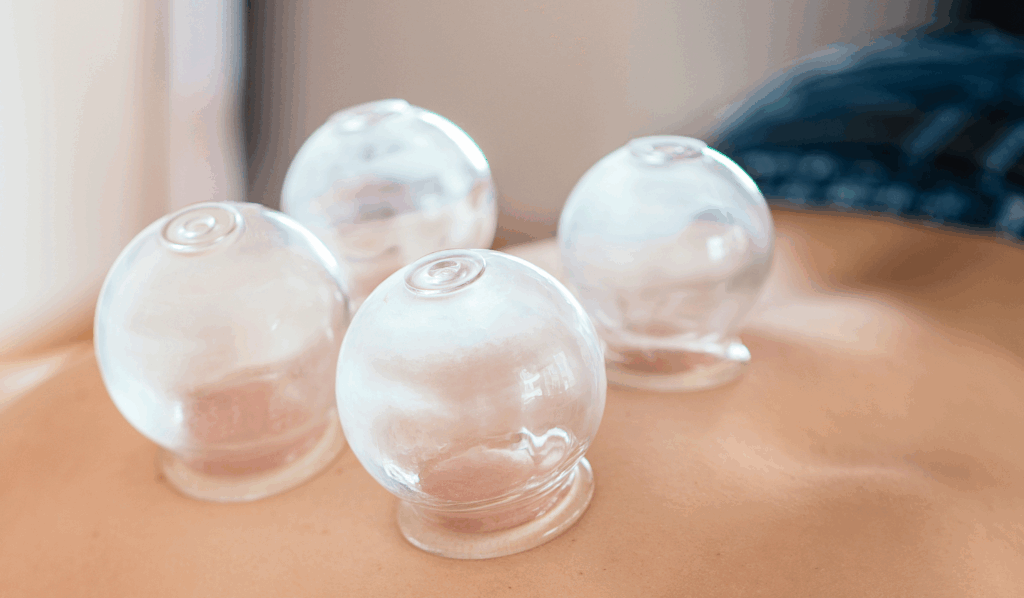Cupping for Lymphatic Drainage: How It Works, Benefits, Techniques, and Aftercare
For centuries, cupping therapy has been a foundational practice in Traditional Chinese Medicine (TCM), recognized for its ability to stimulate circulation, alleviate muscle tension, and support the body’s natural detoxification processes. In recent years, cupping for lymphatic drainage has gained considerable attention as a natural, non-invasive method for reducing fluid retention, promoting immune function, and enhancing overall wellness. By targeting the lymphatic system—a vital network responsible for eliminating toxins, waste, and excess fluids—cupping therapy helps to optimize lymphatic flow, reduce swelling, and facilitate the body’s natural healing processes.
Unlike conventional massage techniques that rely on manual pressure, cupping therapy utilizes specialized cups that create suction on the skin, generating negative pressure to lift tissues and stimulate lymphatic fluid movement. This method can be particularly beneficial for those experiencing chronic fatigue, inflammation, or lymphedema, as it encourages deeper tissue release while reducing muscle tightness. As more individuals seek holistic therapies to support their health, cupping for lymphatic drainage continues to gain popularity for its immediate and long-term benefits.
Cupping for Lymphatic Drainage: How It Works, Benefits, Techniques, and Aftercare
For centuries, cupping therapy has been a foundational practice in Traditional Chinese Medicine (TCM), recognized for its ability to stimulate circulation, alleviate muscle tension, and support the body’s natural detoxification processes. In recent years, cupping for lymphatic drainage has gained considerable attention as a natural, non-invasive method for reducing fluid retention, promoting immune function, and enhancing overall wellness. By targeting the lymphatic system—a vital network responsible for eliminating toxins, waste, and excess fluids—cupping therapy helps to optimize lymphatic flow, reduce swelling, and facilitate the body’s natural healing processes.
Unlike conventional massage techniques that rely on manual pressure, cupping therapy utilizes specialized cups that create suction on the skin, generating negative pressure to lift tissues and stimulate lymphatic fluid movement. This method can be particularly beneficial for those experiencing chronic fatigue, inflammation, or lymphedema, as it encourages deeper tissue release while reducing muscle tightness. As more individuals seek holistic therapies to support their health, cupping for lymphatic drainage continues to gain popularity for its immediate and long-term benefits.
Key Takeaways
-
Cupping therapy stimulates the lymphatic system by using suction to lift tissues and enhance the movement of lymphatic fluid, supporting detoxification and immune function.
-
Using cups along specific lymphatic points, such as the neck, armpits, and abdomen, can help reduce fluid retention and swelling in targeted areas of the body.
-
Cupping offers an alternative to traditional massage by using negative pressure to promote deeper tissue release and more effective lymphatic drainage.
-
Individuals with chronic fatigue, lymphedema, or inflammation may benefit from lymphatic cupping, but consultation with a licensed practitioner is essential for safety.
-
After a cupping session, proper aftercare is crucial, including hydration, rest, and skin monitoring to maximize therapeutic results and reduce side effects.
Understanding the Lymphatic System: The Body’s Natural Detox Network
The lymphatic system is a crucial component of the immune network, responsible for maintaining fluid balance, eliminating toxins, and transporting essential nutrients throughout the body. Unlike the circulatory system, the lymphatic system lacks a central pump, relying instead on muscle movement, breathing, and manual techniques to keep fluids circulating. Cupping therapy can serve as a powerful method for stimulating lymphatic flow, reducing the risk of fluid buildup, and supporting optimal detoxification.
When lymphatic circulation is compromised, it can lead to fluid retention, swelling, and a weakened immune response. Cupping addresses these concerns by using suction to lift the skin and underlying tissues, promoting deeper tissue release and encouraging lymphatic fluid movement. This gentle yet effective technique helps clear cellular waste, reduce inflammation, and facilitate the body’s natural detoxification processes, making it a valuable addition to comprehensive wellness practices.
How Cupping Supports Lymphatic Drainage: Techniques and Effects
Cupping therapy involves the strategic application of cups made from silicone, glass, or plastic, creating localized suction that gently lifts the skin and underlying tissues. This process stimulates deeper tissue release, enhances circulation, and promotes lymphatic fluid movement, making it particularly effective for individuals dealing with chronic fluid retention, swelling, or muscle tension.
When applied along specific lymphatic pathways, cupping encourages the elimination of stagnant fluids, reduces swelling, and aids in the removal of metabolic waste. The negative pressure generated by the cups also alleviates muscle tension, helping to relax tight tissues and further promote fluid drainage. Unlike traditional massage, which applies pressure to push fluids through tissues, cupping uses suction to lift tissues, creating a more profound and lasting effect on lymphatic flow.
The Benefits of Cupping for Lymphatic Drainage
Cupping therapy offers a broad spectrum of health benefits that extend beyond lymphatic drainage, addressing both physical and emotional well-being. This versatile treatment promotes overall wellness while targeting specific health concerns. Here are some of the key benefits:
- Fluid Retention Reduction: Cupping stimulates lymph flow, assisting the body in eliminating excess fluids and reducing puffiness, swelling, and bloating. This can be particularly beneficial for those with lymphedema or chronic edema.
- Detoxification Support: By enhancing lymphatic circulation, cupping helps the body expel toxins, metabolic waste, and excess proteins, promoting optimal detoxification and reducing the risk of toxin buildup.
- Immune System Boost: Consistent lymphatic drainage through cupping strengthens the immune system, supporting the body’s natural defenses against infections, colds, and viruses.
- Chronic Pain Relief: Targeted cupping releases muscle tension, alleviates inflammation, and eases discomfort caused by stagnant lymphatic fluids. This can be particularly effective for individuals with fibromyalgia, chronic fatigue, or post-surgical swelling.
- Stress Reduction and Relaxation: Cupping not only addresses physical discomfort but also promotes a profound sense of relaxation by calming the nervous system, reducing stress hormones, and inducing a state of deep relaxation.
- Improved Circulation: The suction effect created by cupping increases blood flow to targeted areas, nourishing tissues with oxygen and nutrients while expediting the removal of waste products.
- Scar Tissue Breakdown: Repeated cupping sessions can help soften and break down scar tissue, promoting better lymphatic flow and reducing adhesions in areas affected by surgery or injury.
- Enhanced Skin Health: Cupping can improve skin elasticity, reduce the appearance of cellulite, and promote collagen production. This rejuvenating effect is achieved by boosting blood flow and stimulating cellular repair.
- Reduced Inflammation: The negative pressure applied during cupping helps to disperse stagnant fluids, minimizing localized inflammation and promoting faster healing in areas of chronic discomfort.
- Post-Workout Recovery: Athletes and active individuals can benefit from cupping therapy as it helps to release lactic acid buildup, reduce muscle soreness, and prevent delayed onset muscle soreness (DOMS).
- Hormonal Balance: By promoting detoxification and reducing stress, cupping can support hormonal balance, particularly in individuals experiencing hormonal imbalances or adrenal fatigue.
- Digestive Support: Cupping along specific meridian points can aid in relieving digestive discomfort, reducing abdominal bloating, and supporting digestive health.
- Headache and Migraine Relief: For those prone to tension headaches or migraines, cupping can relieve muscle tightness in the neck, shoulders, and scalp, reducing the frequency and intensity of headache symptoms.
- Emotional Release: Cupping not only relaxes physical tension but can also aid in the release of emotional stress, providing a sense of calm and clarity.
- Improved Sleep Quality: By reducing muscle tension and promoting relaxation, cupping can enhance sleep quality, helping individuals fall asleep faster and experience deeper, more restorative sleep.
- Joint Mobility and Flexibility: Cupping therapy can relieve joint stiffness, increase range of motion, and support overall mobility, particularly in individuals with arthritis or chronic joint pain.
- Respiratory Support: Cupping applied to the upper back or chest can help alleviate congestion, improve lung capacity, and relieve respiratory conditions such as asthma and bronchitis.
Cupping Techniques for Optimal Lymphatic Drainage
There are several cupping techniques that can be specifically tailored to enhance lymphatic drainage. Each method offers distinct benefits depending on the treatment goals and areas of concern:
Stationary Cupping: Cups are placed on specific lymphatic points and left in place for a set period to promote localized drainage and relieve tension. This technique is ideal for targeting areas with stagnant lymph or persistent swelling, allowing the suction to gently lift tissues and facilitate fluid movement. It also helps to reduce localized inflammation and promote deep relaxation in muscles prone to stiffness.
Sliding Cupping: With the use of massage oil, cups are moved along the skin in a gliding motion to encourage a more extensive lymphatic release. This method not only stimulates lymphatic flow but also provides a massage-like effect, reducing muscle tension while enhancing circulation. Sliding cupping is particularly beneficial for larger areas such as the back, thighs, or calves, as it effectively moves fluids and breaks up adhesions.
Flash Cupping: Rapid placement and removal of cups provide quick bursts of suction, stimulating lymphatic flow and relieving muscle tightness. This technique is often used to release trapped fluids quickly, making it useful for acute swelling or post-surgical edema. Flash cupping also invigorates the skin, promoting blood circulation and supporting overall detoxification.
Pulsing Cupping: The suction level is varied to create rhythmic movements that enhance fluid circulation and tissue relaxation. This technique mimics the natural pulsation of the lymphatic system, effectively promoting lymph flow while gently massaging underlying tissues. It is especially useful for those with chronic lymphedema or areas of hardened tissue, as it encourages gradual, yet consistent, fluid movement.
Each of these techniques can be customized based on the individual’s health concerns, ensuring a comprehensive therapeutic experience that targets specific areas while optimizing lymphatic drainage.
Lymphatic Drainage Points for Cupping Therapy
Cupping therapy for lymphatic drainage is most effective when applied to specific points along the body where lymph nodes are concentrated and lymphatic fluid tends to accumulate. These points are strategically targeted to encourage optimal lymph flow, reduce swelling, and promote detoxification. Here are key lymphatic drainage points commonly addressed in cupping therapy:
- Neck and Clavicle Area: The area along the sides of the neck and just above the collarbone is rich in lymph nodes that drain fluids from the head, face, and upper body. Cupping here can help alleviate fluid buildup and reduce swelling in the neck and face.
- Axillary Lymph Nodes (Underarms): Located in the armpits, these nodes filter lymph from the arms, chest, and upper back. Cupping along this area assists in clearing toxins and reducing fluid retention in the upper body.
- Abdomen: The abdominal region is home to a significant number of lymph nodes that handle lymphatic fluid from the digestive organs. Applying cupping in gentle, circular motions helps to stimulate digestive lymph flow and alleviate abdominal bloating.
- Inguinal Lymph Nodes (Groin Area): These nodes are located in the groin and filter lymph from the lower abdomen, pelvis, and legs. Cupping near this area promotes lymphatic flow, particularly for individuals experiencing lower body swelling or lymphedema.
- Behind the Knees: This area is a key drainage point for the legs and feet. Cupping behind the knees encourages fluid movement and reduces leg swelling, especially after prolonged periods of standing or sitting.
- Ankles and Feet: Cupping around the ankles and the base of the feet can further aid in reducing fluid retention and improving circulation throughout the lower extremities.
Each of these points can be addressed using specific cupping techniques, such as sliding, pulsing, or stationary cupping, to effectively stimulate lymphatic drainage and enhance overall fluid movement.
Who Can Benefit from Cupping for Lymphatic Drainage?
Cupping therapy for lymphatic drainage can be particularly beneficial for individuals dealing with chronic fatigue, fibromyalgia, post-surgical swelling, or persistent fluid retention. It is also effective for those experiencing muscle tension, inflammation, or lymphedema. However, cupping may not be suitable for everyone, especially those with skin conditions, blood clotting disorders, or recent injuries.
Before undergoing treatment, it is essential to consult with a licensed practitioner to assess suitability and ensure a safe, effective cupping plan tailored to specific health needs.
At ACA Acupuncture and Wellness, our licensed practitioners assess each patient’s health history and specific concerns to determine the most appropriate cupping techniques for optimal lymphatic drainage. This personalized approach ensures safe, effective treatment tailored to each individual’s unique health needs.
Cupping vs. Traditional Massage: Which Is Better for Lymphatic Drainage?
While both cupping and traditional massage are effective for promoting lymphatic drainage, they work through distinct mechanisms. Massage applies manual pressure to move fluids through tissues, while cupping uses negative pressure to lift tissues, creating a deeper and more sustained effect on fluid movement.
For individuals dealing with significant fluid buildup or chronic muscle stiffness, cupping may provide faster and more targeted relief than conventional massage. However, a combination of both therapies can be highly effective, especially when integrated into a comprehensive wellness plan designed to support lymphatic health and overall relaxation.
Potential Risks and Considerations: Is Cupping Safe?
While cupping therapy is generally considered safe when performed by a qualified practitioner, there are some potential risks to be aware of. Mild bruising, redness, or tenderness may occur following a session, but these effects typically resolve within a few days. Individuals with open wounds, skin infections, or blood clotting disorders should avoid cupping therapy to prevent complications.
To ensure safe and effective treatment, it is essential to work with a licensed cupping practitioner who adheres to strict hygiene and safety protocols.
Aftercare for Lymphatic Cupping: Maximizing Results
Following a cupping session, it is essential to practice proper aftercare to enhance the benefits and minimize potential side effects. Recommended aftercare tips include:
- Stay Hydrated: Drink plenty of water to flush out toxins released during the session.
- Rest and Relax: Allow the body time to recover, particularly if cupping was performed for muscle tension or swelling.
- Avoid Heat and Cold: Refrain from hot baths, saunas, or cold compresses immediately after treatment to prevent skin irritation.
- Monitor the Skin: Apply a gentle moisturizer to soothe any redness or bruising, and keep the treated area clean and dry.
- Consult the Practitioner: Discuss any persistent discomfort or unusual symptoms with the practitioner to ensure optimal recovery.
Supporting Lymphatic Health
Maintaining a healthy lymphatic system is essential for optimal body function, as it plays a key role in nutrient transport, immune defense, and fluid balance. When lymphatic flow is sluggish, waste products can accumulate, leading to discomfort and a weakened immune response. Cupping therapy offers a targeted approach to invigorate lymphatic circulation, helping the body clear stagnant fluids and reduce inflammation. Integrating complementary therapies such as moxibustion, reflexology, Tuina massage, and facial cupping can further enhance the effects of lymphatic drainage, promoting deeper relaxation and overall rejuvenation. Techniques like an acu facial not only support lymphatic flow but also boost skin vitality, reduce puffiness, and improve complexion, making it a valuable addition to comprehensive wellness care.
At ACA Acupuncture and Wellness, our licensed practitioners provide tailored cupping therapy sessions to promote lymphatic drainage, alleviate fluid retention, and enhance overall well-being. Contact us today to schedule a consultation and discover how cupping therapy, along with other holistic treatments, can support your health goals.
Sources:
Furhad, S., Sina, R. E., & Bokhari, A. A. (2023, October 30). Cupping therapy. In StatPearls. StatPearls
Al-Bedah, A. M. N., Elsubai, I. S., Qureshi, N. A., Aboushanab, T. S., Ali, G. I. M., El-Olemy, A. T., Khalil, A. A. H., Khalil, M. K. M., & Alqaed, M. S. (2019). The medical perspective of cupping therapy: Effects and mechanisms of action. Journal of Traditional and Complementary Medicine, 9(2), 90-97.
Lowe, D. T. (2017). Cupping therapy: An analysis of the effects of suction on skin and the possible influence on human health. Journal of Bodywork and Movement Therapies, 21(4), 675-681.
Frequently Asked Questions
Can cupping therapy for lymphatic drainage support weight loss efforts?
Cupping therapy for lymphatic drainage is not a direct weight loss method but can indirectly support weight management by reducing fluid retention, eliminating toxins, and improving circulation. By promoting the removal of metabolic waste, it may help reduce bloating and improve digestion, which can contribute to a slimmer appearance. However, cupping should be combined with a balanced diet and regular exercise for noticeable weight loss results.
How can cupping for lymphatic drainage impact hormonal balance?
Cupping therapy can potentially influence hormonal balance by reducing stress levels and promoting relaxation. Stress can disrupt hormone production, and by calming the nervous system, cupping may help regulate hormones associated with cortisol and adrenal function. Additionally, enhanced lymphatic flow can aid in the removal of toxins and excess hormones, contributing to overall endocrine health.
What signs indicate poor lymphatic drainage that cupping therapy can address?
Symptoms of poor lymphatic drainage can include swelling, puffiness, chronic fatigue, frequent infections, muscle aches, skin breakouts, and feeling sluggish or heavy. Cupping therapy for lymphatic drainage can alleviate these symptoms by stimulating fluid movement, reducing inflammation, and promoting detoxification, helping the body clear waste more efficiently.
Does cupping for lymphatic drainage help release muscle knots?
Yes, cupping therapy can effectively release muscle knots by creating suction that lifts and separates the muscle fibers, increasing blood flow and reducing tension. While its primary focus is lymphatic drainage, cupping can also target areas of muscle tightness, encouraging the release of adhesions and relieving discomfort associated with muscle knots.
What types of toxins are released during lymphatic drainage cupping?
Lymphatic drainage cupping may help eliminate metabolic waste products such as lactic acid, uric acid, and excess proteins. It can also assist in flushing out environmental toxins, cellular debris, and stagnant lymph fluid. The detoxification effect varies depending on the individual’s health status and lifestyle factors.
How long do the effects of lymphatic drainage cupping typically last?
The effects of lymphatic drainage cupping can last from a few days to a couple of weeks, depending on the individual’s condition, lifestyle, and overall lymphatic health. Regular sessions may extend these benefits, especially for those dealing with chronic conditions or fluid retention. Staying hydrated, maintaining a healthy diet, and engaging in light exercise can also help prolong the positive effects.
Contact ACA Acupuncture & Wellness
Get in Touch
Newsletter Sign Up
LOCATIONS
MANHATTAN
QUEENS
NEW JERSEY
CALIFORNIA
ACA Franchise Opportunities
The over $4 billion US acupuncture market offers a great opportunity with over 10% annual growth rates and a continuing flow of new patients interested in the benefits of acupuncture.



